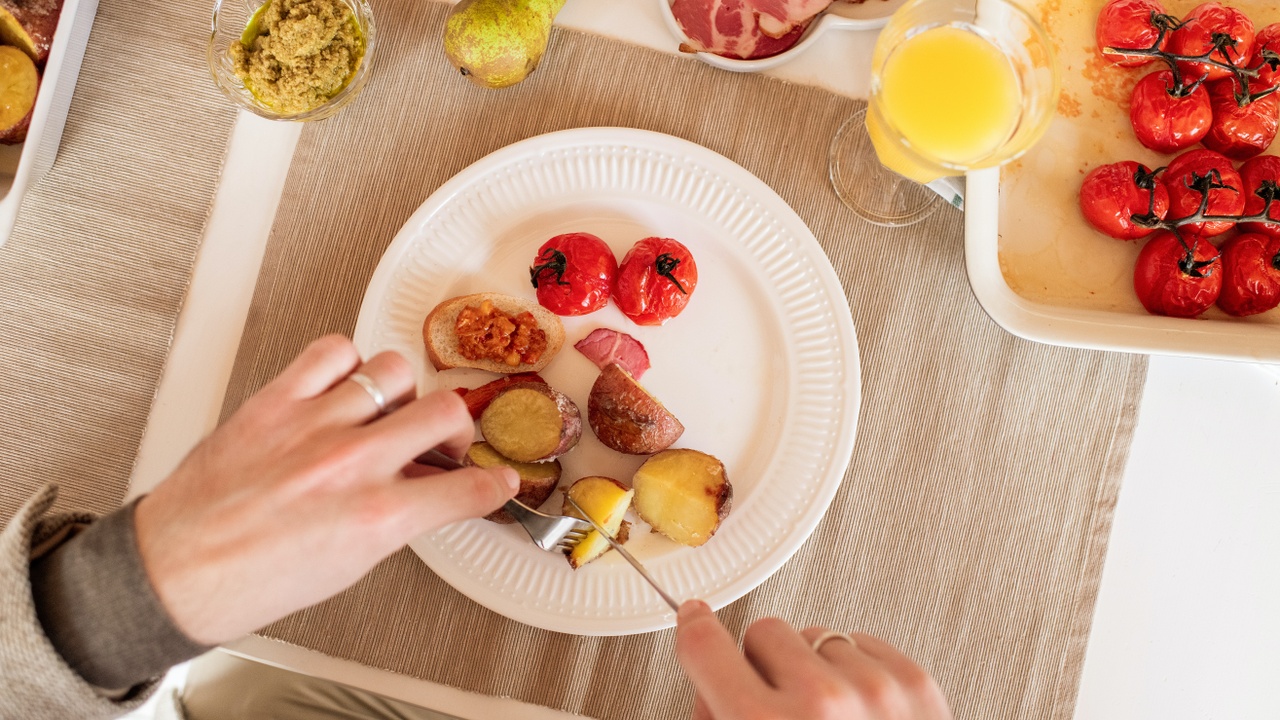The Low Gl Diet: The simple weight loss solution

Have past diets left you feeling frustrated and ready to give up on weight loss altogether?
In the age of information, it can feel impossible to find a diet that not only works to keep the pounds off but does so in a sustainable way.
We try the latest fad diet as suggested by Instagram…
Count calories and weigh our food…
Only to be back at where we started, and sometimes we’re worse off for it.
That ends today.
Introducing the low glycemic diet — an easy diet that anyone can follow and it’s not as restrictive as you might think.
What is a low glycemic diet?
A low glycemic diet aims to curb overeating and maintain steady blood sugar levels with foods low on the glycemic index (GI) scale.
There’s no need to measure your food or obsessively count calories. All you have to do is exchange high GI foods for low GI alternatives, and eat in a mindful way.
But to understand how you can lose weight on this diet, it’s important to know what the GI scale is and how it relates to your weight loss journey.
The Glycemic Index (GI)
Introduced by Dr. David Jenkins in 1981, the glycemic index is a scale that assigns foods with carbohydrates a number from 0 to one 100. This shows the speed at which a carb will cause your blood sugar levels to rise after eating.
Carbohydrates that are quick to break down into glucose (blood sugar) have a high GI score, while those with a low GI score break down slowly throughout the day.
In other words, the higher the GI score, the higher your blood sugar levels will spike. The smaller the GI score, the smaller the spike.
GI Ratings
The glycemic index places foods into three categories:
- Low GI: 55 or less
- Medium GI: 56 to 69
- High GI: 70 or higher
Additionally, it’s important to note that several factors can influence how a carb will affect your blood sugar levels. This includes:
- How you prepare a meal.
- Your age, how active you are, and your metabolism rate.
- The ripeness of fruits such as a banana.
- Eating other foods at the same time.
Why the GI diet matters
When you consume foods high on the glycemic index scale, such as white bread or potatoes, a dramatic rise and fall in your blood sugar levels occur. This makes you feel hungry and causes you to overeat.
By eating these foods, you’re challenging your blood sugar levels in an unsustainable way. Meaning you’ll gain unwanted weight and risk developing chronic conditions such as type 2 diabetes and heart disease. This is especially dangerous for those who are already insulin resistant or have prediabetes. [Recommended reading: Prediabetes diet plan for beginners]
Following a low glycemic diet ensures your blood sugar levels will remain stable and in turn will improve your overall health and well-being.

How to use the GI for weight loss
A low glycemic weight loss diet plan means you have to eat foods low on the GI scale. Moreover, the majority of your food should have a score of 55 or less.
When planning your next meal or shopping trip, make it a habit to look up the glycemic index of your foods using a GI search engine.
This may feel tedious at first but over time you’ll get a feel for the right foods.
What to eat
Health experts recommend sticking to whole foods and limiting processed ones. As nutrition writer Mr. Pollan puts it, “If it came from a plant, eat it. If it was made in a plant, don't!”
Eat foods with a GI score of 55 or less, and eat a moderate amount of foods with a GI score of 55 to 75.
This includes but is not limited to:
- Whole grains such as multigrain bread, steel-cut oats, quinoa, brown rice, and wheat pasta.
- Fruit such as grapefruit, apples, berries, pears, and tomatoes.
- Non-starchy vegetables such as spinach, broccoli, cauliflower, and zucchini.
- Legumes such as lentils, beans, and chickpeas.
- Dairy and dairy substitutes such as plain yogurt, almond or soy milk, and low-fat cheese.
- Protein such as turkey and chicken, and soy products.
Additionally, some foods contain few or no carbohydrates and thus have no GI score.
Here are some items you can also add to your diet:
- Nuts such as almonds, walnuts, and cashews.
- Fish such as salmon, tuna, and prawns
- Eggs and egg whites
- Avocado
- Lean red meat
- Olive oil
What to avoid
Avoid foods with a GI score of 75 or higher as much as possible. This includes but is not limited to sugary drinks and cereals; white bread, white rice, and refined pasta; and big potatoes.
Best Practices
Additional weight loss tips:
- Have three meals a day and one to two snacks in between. Never skip meals.
- Practice low impact exercises such as walking, swimming, or cycling.
- Design your kitchen to support your weight loss journey.
- Eat slow and stop when you’re full.
- Use the plate method.
The takeaway
Starting a new diet can be stressful, but a low glycemic diet doesn’t have to be.
Following a low GI diet for weight loss gives you an abundance of options to choose from with a guarantee of weight loss that you can’t find anywhere else.
Take control of your health and weight naturally by downloading Well and Easy’s FREE Low Glycemic Starter Kit today.


